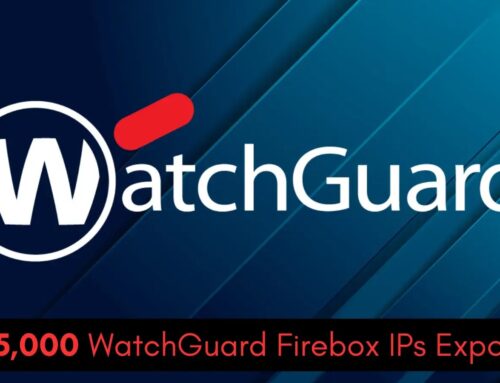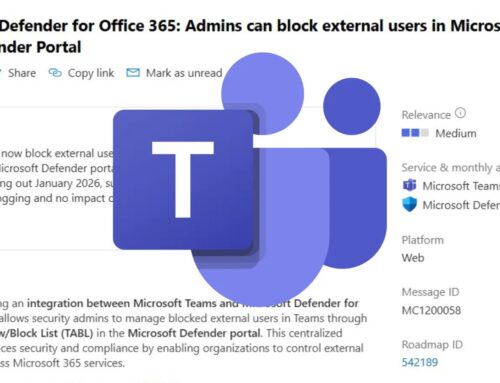
Wireshark 4.4.9 Released With Fix For Critical Bugs and Updated Protocol Support
In the dynamic realm of network analysis and cybersecurity, the tools we rely on for deep packet inspection and protocol decoding are paramount. Wireshark, the undisputed champion in this arena, consistently delivers insights crucial for troubleshooting, development, and, critically, security investigations. Its latest iteration, Wireshark 4.4.9, has just been released, marking a significant maintenance update focused on shoring up its foundational stability and expanding its already impressive protocol support.
This isn’t merely another incremental update; it’s a vital release that addresses critical bugs and refines the capabilities of the world’s most popular network protocol analyzer. For IT professionals, security analysts, and developers, understanding the implications of this update is essential for maintaining robust network visibility and operational integrity.
Wireshark 4.4.9: A Focus on Stability and Reliability
The core philosophy behind the Wireshark 4.4.9 release centers on enhancing the stability and reliability of the platform. Maintenance releases often fly under the radar, but their importance cannot be overstated. They are the bedrock upon which future innovations are built, ensuring that the existing functionalities perform flawlessly under diverse and demanding network conditions.
According to the official announcement, this version is a direct response to issues identified in previous iterations, ensuring a more stable and predictable user experience. For anyone who uses Wireshark extensively, this translates to fewer crashes, more accurate data capture, and ultimately, more efficient analysis sessions.
Critical Bug Fixes: Bolstering Network Analysis
A primary driver for the 4.4.9 update is the inclusion of fixes for critical bugs. While specific CVEs were not detailed in the initial release announcement, the very nature of a “critical” bug fix in a network analysis tool warrants immediate attention. Such vulnerabilities could potentially impact the integrity of captured data, lead to application instability, or, in severe theoretical cases, even create an avenue for exploitation if Wireshark were handling maliciously crafted packet data in an unexpected way.
When updates like this are released, it underscores the continuous effort by the Wireshark development team to harden the application against unforeseen issues. Users are strongly encouraged to upgrade to mitigate any potential operational disruptions or analytical inaccuracies that might stem from these now-patched defects.
Enhanced Protocol Support: Keeping Pace with Evolving Networks
Modern networks are a complex tapestry of diverse protocols, constantly evolving to meet new demands for speed, security, and functionality. Wireshark’s utility is directly proportional to its ability to interpret and decode this intricate communication. Wireshark 4.4.9 brings enhanced support for several existing protocols, although the specific protocols were not explicitly named in the public release notes.
This continuous refinement of protocol dissectors is crucial for:
- Accurate Troubleshooting: Deeper understanding of protocol nuances helps pinpoint the root cause of network issues faster.
- Security Analysis: The ability to accurately decode traffic for emerging or specialized protocols reveals subtle anomalies that could indicate malicious activity.
- Developer Support: For those developing or testing network applications, precise protocol dissection is indispensable for validating implementations.
The commitment to updating protocol support ensures that Wireshark remains the gold standard for understanding contemporary network traffic, from traditional Ethernet frames to specialized industrial control system protocols and beyond.
Availability Across Major Platforms
Accessibility is a hallmark of Wireshark’s widespread adoption. True to form, Wireshark 4.4.9 is immediately available across all supported platforms. This includes:
- Windows: The primary platform for many enterprise and home users.
- macOS: Catering to Apple’s growing professional user base.
- Linux: A critical platform for server environments, penetration testers, and network engineers who prefer open-source operating systems.
This broad availability ensures that regardless of their operating environment, users can quickly migrate to the latest, most stable, and feature-rich version.
Remediation Actions: Staying Secure and Effective
While Wireshark 4.4.9 primarily addresses internal bugs and enhances functionality rather than patching a direct external attack vector *against* Wireshark itself, the implications for network security are significant. Maintaining an updated network analysis toolkit is a crucial remediation action in itself. Here’s why and what actions to take:
- Immediate Upgrade: The most critical action is to download and install Wireshark 4.4.9 on all systems where Wireshark is deployed. This mitigates any potential stability issues or analytical inaccuracies that may have existed in previous versions.
- Verify Integrity: After downloading, ensure the integrity of the downloaded package by verifying its checksum against the values provided on the official Wireshark website. This protects against supply chain attacks where malicious actors might tamper with software distributions.
- Regular Updates: Institute a policy for regularly checking for Wireshark updates. The network landscape evolves rapidly, and so does the need for robust analysis tools.
- Utilize Tools for Analysis: The very purpose of Wireshark is analysis. Use its updated capabilities to perform deeper inspections of network traffic, specifically looking for anomalies or deviations in updated protocols.
Conclusion: An Essential Update for Network Professionals
The release of Wireshark 4.4.9 reinforces its position as an indispensable tool in the arsenal of any IT professional, cybersecurity analyst, or network developer. While it’s a maintenance release, its focus on critical bug fixes and enhanced protocol support translates directly into a more reliable, accurate, and powerful network analysis experience. Staying current with such updates is not merely good practice; it is fundamental to understanding, securing, and optimizing today’s complex network infrastructures.





